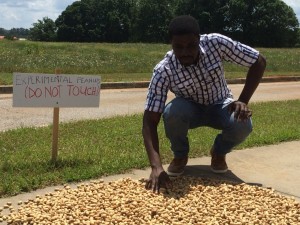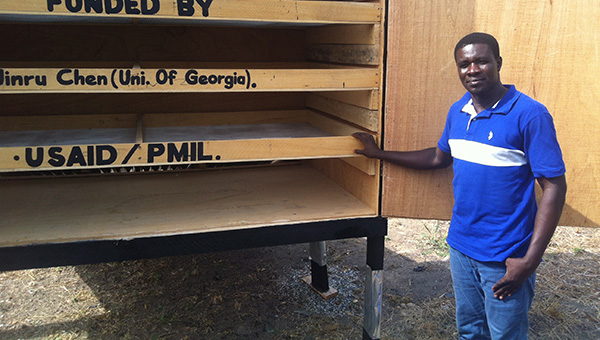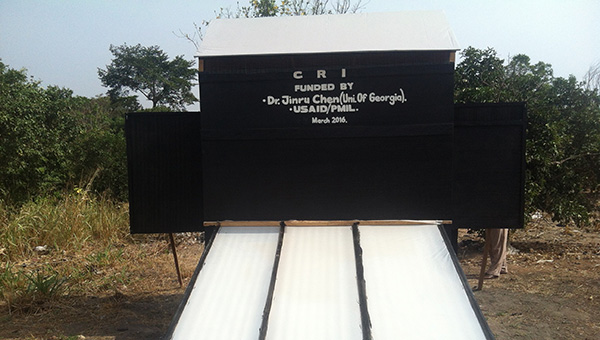Q&A with Maxwell Lamptey
By Christy Fricks
University of Georgia, Peanut & Mycotoxin Innovation Lab
Background
 Maxwell Lamptey is participating in a short-term training program supported by the Peanut & Mycotoxin Innovation Lab from March to September 2015. As a Senior Technical Officer working on legumes at the Crops Research Institute (CRI) in Kumasi, Ghana, Maxwell was nominated for the program by CRI Deputy Director Emmanuel Otoo.
Maxwell Lamptey is participating in a short-term training program supported by the Peanut & Mycotoxin Innovation Lab from March to September 2015. As a Senior Technical Officer working on legumes at the Crops Research Institute (CRI) in Kumasi, Ghana, Maxwell was nominated for the program by CRI Deputy Director Emmanuel Otoo.
During his time in the USA, he is working with PMIL Collaborator Dr. Jinru Chen in Food Science and Technology on the University of Georgia’s Griffin campus. He is studying the use of solar drying to control aflatoxin contamination in peanut.
PMIL: Would you tell us a little bit about what you do and how you got involved in working with legumes?
Lamptey: "In Ghana, I am a legume technician. I am involved in conducting a lot of trials, evaluations and cross hybridizations of all kinds of legumes, but mainly cowpeas and groundnuts (peanuts). I really like working in the field.
Agriculture is something I love. Growing up, my primary education was in the city, but then I returned to the village where my grandmother lived. My grandmother was the one that was really into farming. It was part of her daily activity, a part of life. Through her, I developed a love for farming."
PMIL: As someone who’s grown up and worked in agriculture in Ghana, when and how did you hear about aflatoxin as a risk?
Lamptey: "Aflatoxin is not something that is well known outside the scientific community. Most families in Ghana do not know much about it. Actually, I hardly hear anything about it in Ghana.
But when at home, I try to transfer knowledge about the risks to the farmers."
PMIL: How do you communicate information about aflatoxin control to the farmers?
Lamptey: "Normally, we work directly with them. Sometimes we conduct seminars in the villages and the famers come from the fields and neighboring villages. But we also go to their fields and talk with them and their families. We try to employ a lot of people--technicians and students--when we go to the farmers’ fields. This is where we have the most impact.
A lot of times we are talking only about increasing yield. So when I get home, I hope that we will be incorporating more of this (aflatoxin control) into the information we are providing."
PMIL: You are studying solar drying techniques while you are in the USA. Will you be teaching about that when you return home as well?
Lamptey: "I hope I will gain a lot of knowledge about farming and storage and aflatoxins. But my main goal for my time here is to come out with the best and most affordable technique for building solar dryers. Then, when I go home farmers can build it themselves with what they have. I want to develop a dryer that can be built with almost all local materials."
PMIL: Would you describe the solar dryer you are working on and how it is different from what is used now?
Lamptey: "I am looking at solar drying and normal drying. Normal drying is exposing the peanuts directly to sunlight on the ground or on concrete.
Solar drying does not expose the peanuts directly to sunlight and they are not exposed to rain either. The dryer has a collector to capture the heat from the sun and an enclosed structure around the nuts that conducts the heat. Everything is enclosed so there will be no moisture from rain.
I want to work to create technology that eliminates aflatoxin and that is affordable and easily transferred to farmers."
Published July 23, 2015


